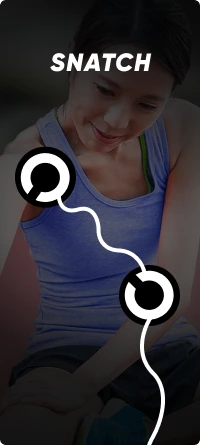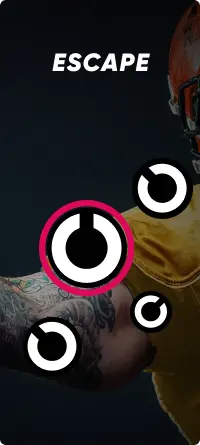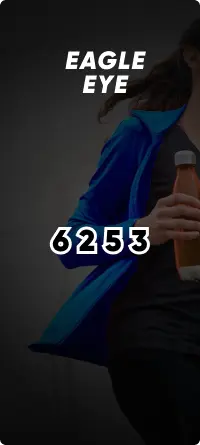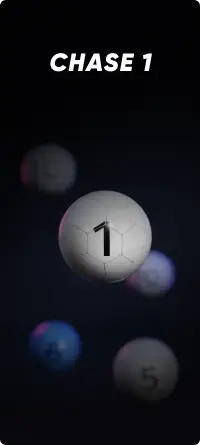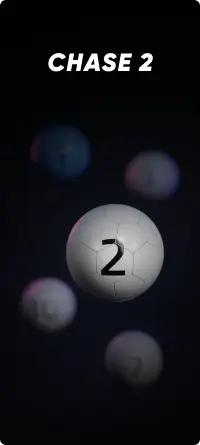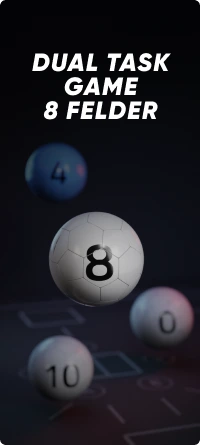Vision
Train your vision with SKILLCOURT
IMAGINE
YOU CAN…
…see better.
Then
you
are…
longer vision
Improve your eyesight and prevent poor eyesight.
secure
Estimate distances and speeds better.
better timing
Always be in the right place at the right time.
visual stress resistent
Counteract the daily strain on your eyes.
What is vision?
Defin
ition
Vision is our dominant sensory system. Approximately 80% of the information perceived comes from the visual system. Photoreceptors on the retina of the eye convert the light in the environment into electrical signals. Rods perceive brightness and movement, cones ensure color perception and details. The pupil regulates the amount of light and we can focus through the lens. Six large eye muscles control the movement of the eye. The optic nerve transmits the signals to the brain, where the images are generated. Vision enables us to recognize colors, shapes, movements and speeds and is therefore essential for interaction with the environment in every area of life.


vision over time
Develo
pment
Vision changes with age. From around the age of 40, the flexibility of the lens decreases and so-called presbyopia occurs. Color perception, visual acuity, dark adaptation and contrast perception also decrease with age. Long periods of screen work and the associated dry eyes and tense eye muscles accelerate this process. This significantly increases the risk of accidents in road traffic.
Regular exercises can maintain and improve visual skills in everyday life, sports and work. The SKILLCOURT will help you with this.
Vision can
be trained
on the SKILLCOURT
Eye mobility
Ability to move the eyes for visual perception
Accommodation
Adjusting the eye lens for focusing
Binocularity
Using both eyes for spatial vision
Brain integration
Combination of visual information in the brain
Special exercises train the four areas and improve the perception and processing of visual information. With the specially developed diagnostics, training progress can also be regularly evaluated.
Visual
Exercises
on the SKILLCOURT
The SKILLCOURT includes a special category for training visual skills. Different games and levels require the rapid perception of visual information, peripheral vision or the perception of movement. The exercises for the visual system on the SKILLCOURT include:
Testim
onials

I have the feeling that my eyes have improved as a result of the targeted visual exercises. I feel safer when doing sports and in everyday life. Thank you SKILLCOURT!
– Sarah U.

I was skeptical when I heard about vision training with the SKILLCOURT, but after a few weeks I am absolutely convinced. As an athlete, I now feel like I can react more quickly to changing game situations.
– Marc P.

I’ve been looking for a solution for a long time to relax my eyes after long days at work. The SKILLCOURT helped me relieve my eyestrain and reduce fatigue.
– Julia P.
Ready to implement SKILLCOURT?
Are you interested in the SKILLCOURT and would like more information
on how you can integrate the training into your facility?
FA
Qs
How do eyes change over the course of life?
From the age of 40, visual abilities such as visual acuity, dark adaptation, colour vision and contrast perception begin to decline. Current social developments such as working for long periods of time at a screen and the resulting tightening of the eye muscles are accelerating this process.
Which sign of aging affect vision and how can training with SKILLCOURT prevent them?
As we age, the flexibility of the lens decreases and it becomes more difficult to see close objects clearly. In addition, the retina and the underlying pigment epithelium can lose structure and affect color perception. Peripheral perception is also affected by the narrowing of the field of vision as we age.
Based on Skeffington’s four qualities of vision (eye mobility, binocularity, accommodation and brain integration), the SKILLCOURT trains visual skills to improve vision and prevent visual impairments.
What role do screen work and digital devices play for our eyes?
Long periods of screen work require strong contraction of the eye muscles in order to see clearly at short distances. As with any other muscle, this leads to shortening and cramping of the eye muscles over long periods of time, with corresponding restrictions on visual abilities such as visual acuity. There are also stress symptoms such as burning eyes, itching or dry eyes. The same applies to long screen times on cell phones or tablets. The blue light emissions from digital devices also have a negative impact on the sleep-wake cycle.
How can SKILLCOURT prevent digital eye stress and maintain eye health?
Exercises on the SKILLCOURT require eye mobility, binocularity, accommodation and brain integration, and thus cover the primary functions of vision according to Skeffington. Special exercises and levels present the eye and the visual system with motor and sensory challenges in the areas of visual attention, movement perception and peripheral vision. The training helps to relax the eye muscles, improve visual skills and prevent poor eyesight.
Which SKILLCOURT exercises help test and sustainably influence vision?
The visual training exercises on the SKILLCOURT include:
– Snatch
– Escape
– Eagle Eye
– Chase
– Chase 2
– Dual Task (5)
– Dual Task (8)
In addition, the SKILLCOURT contains a series of diagnostic tests to analyze visual acuity, contrast perception and dynamic fixation.
Join our
Comm
unity
Do you want to find out more and not miss anything? Then follow us on our social media channels, or sign up for our latest newsletter. Become part of the SKILLCOURT community today!
Ready
for
SKILLCOURT?
If you're ready to offer SKILLCOURT at your facility or to find out more then simply complete the contact us form and we will be in touch!

